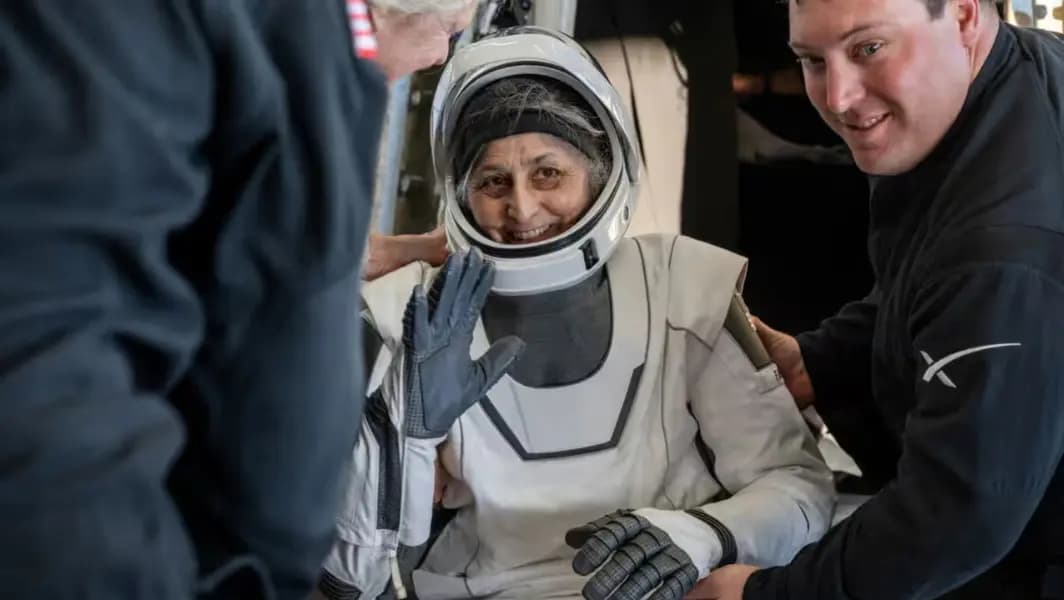
NASA Astronauts Sunita Williams and Butch Wilmore Return to Earth After Nine Months in Space
A Historic Mission and Political Controversy Surround Their Return
NASA astronauts Butch Wilmore and Sunita Williams have successfully returned to Earth after an unplanned nine-month stay in space. The pair, along with fellow astronaut Nick Hague and Russian cosmonaut Aleksandr Gorbunov, made their journey home aboard SpaceX's Crew Dragon capsule, named Freedom. The capsule splashed down off the coast of Florida on March 18, 2025, after a 17-hour return trip from the International Space Station (ISS).
Successful Splashdown Marks the End of a Prolonged Mission
The crew’s return came after an extended mission that began with a failed spacecraft intended to bring them back. Initially, Wilmore and Williams were supposed to return on Boeing’s Starliner during its first crewed flight, but propulsion issues grounded the spacecraft, leaving the astronauts stranded in space. They were reassigned to NASA's SpaceX Crew-9 mission, which arrived at the ISS last September with a reduced crew to accommodate the stranded astronauts.
The Freedom capsule, which had endured temperatures of 3,500°F (2,000°C) during re-entry, landed safely on the ocean’s surface at 5:57 PM (2157 GMT). Ground crews, cheered by the successful splashdown, assisted the astronauts onto mobility aids, and they were then transferred to helicopters for a flight back to Houston. There, they are expected to meet with their families before starting physical rehabilitation.
A Journey Surrounded by Political Controversy
Their mission became a political flashpoint when President Donald Trump and his close advisor Elon Musk, the CEO of SpaceX, claimed that the astronauts' return had been delayed due to President Joe Biden’s refusal to authorize an earlier rescue mission. These claims stirred controversy in the space community, especially as Musk failed to provide any specifics, and NASA’s plan for the astronauts' return had not changed since they were reassigned to Crew-9.
Steve Stich, the manager of NASA’s Commercial Crew Program, stated in a post-mission press conference that there were no discussions about a relief crew being deployed sooner. He also confirmed that delays were due to SpaceX's own scheduling adjustments.
Unprecedented Challenges and ‘Unbelievable Resilience’
The astronauts' 286-day mission far exceeded the usual six-month stay aboard the ISS, placing it among the longest space missions by U.S. astronauts. Despite challenges such as muscle loss, bone density reduction, vision issues, and balance difficulties, experts state that the health risks were manageable. Their extended stay, initially without enough supplies, sparked public sympathy, with many praising their resilience.
A Global and Political Focus
The political controversy deepened after Trump made remarks about Williams, calling her “the woman with the wild hair” and speculating on the personal dynamics between the astronauts. These comments sparked backlash, especially considering Williams' impressive U.S. record for the second-longest cumulative time in space.
NASA, on the other hand, reaffirmed its commitment to space exploration and stated that the astronauts’ return was part of the original mission plan, and that no early rescue plans had been proposed.
Final Thoughts
The return of Wilmore and Williams marks the end of an extraordinary mission and brings closure to an unexpected chapter in human space exploration. Despite the political drama, their journey underscores the resilience, teamwork, and determination of astronauts, demonstrating the challenges and triumphs that come with extended stays in space.
For any enquiries or information, contact info@thelawreporters.com or call us on +971 52 644 3004. Follow The Law Reporters on WhatsApp Channels